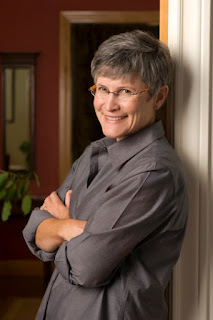Anyone who writes a book should be prepared to
answer one question about it: “Why?”
Even the simplest book is a lot of work,
involving long hours of writing and rewriting, edits and re-edits. You need at
least a decent reason for deciding to take that on.
So allow me to ask and answer my own question.
Why did I write From Darkness to Dynasty: The First 40 Years of the New England Patriots? Because I've always wanted to read this book — and since
the universe was taking its sweet time getting around to it, I wrote it myself.
These are
the stories I grew up on as the youngest of five in a Patriots-first household
outside of Boston. Not the ones about the 21st century
Patriots, that model sports franchise that has not only dominated on the field
for an unprecedented span of years, but has owned the headlines as well. As pro
football has taken center stage in American pop culture, the Patriots have
dominated the news cycle with scandals, controversies, and celebrity status like
no other team.
And yet, for the first four decades of their
existence, they were the polar opposite. Laughingstocks on the field and off. A
downtrodden, mismanaged, amateurish operation that was perpetually on the brink
of ruin. For ten years they didn't have a stadium to call their own. When they
finally built one, it was an obsolete dump surrounded by a dirt parking lot
that looked like the surface of Mars.
Unlike the current Patriots, the controversies
of the early teams were never about trying to gain a competitive advantage and
win championships. There were power struggles. Lawsuits. There was the time
they drafted a player not knowing he was getting a knee operation, then almost
drafted a dead man. When they met with success, it immediately came crashing
down around them. Like the time a very successful coach had secretly taken a
job to coach elsewhere and was caught using team resources to work for his new
employer. Then 18 years later, history repeated itself with another great coach
doing the exact same thing. In between, they went to a Super Bowl, only to have
a major drug scandal tear the locker room apart the very next day.
And what finally turned the Patriots around were
the dual rock-bottoms of a financially ruinous Michael Jackson concert tour and
a player sexually harrassing a female reporter. Through a series of bold moves
by people of vision, the franchise was saved, competent leaders were brought in
and an era of unimaginable success began. But not without dozens of
coincidences small (an unconscious player saved a game), large (a franchise
quarterback was replaced due to a near-fatal injury) and monumental (9/11), without
which the Patriots may never have won a championship.
Now they have four. And counting. Which
represents the most remarkable turnaround of any franchise in the history of
North American sports. And I'm happy to be the one to tell it. Somebody had to,
after all.
Jerry Thornton is co-host of WEEI Sports Radio Network's Dale
and Holley with Thornton Show, creator of WEEI.com's Thornography blog,
stand up comic, and author of Darkness to
Dynasty: The First 40 Years of the New England Patriots. Jerry
has worked everywhere from Barstool Sports to HBO's “Reverse of the Curse of
the Bambino,” from the parking lots of Foxboro to the comedy clubs of New
England. The one man who was right about Deflategate from Minute One, he's
written a million pro football pieces and he's rocked them all.








